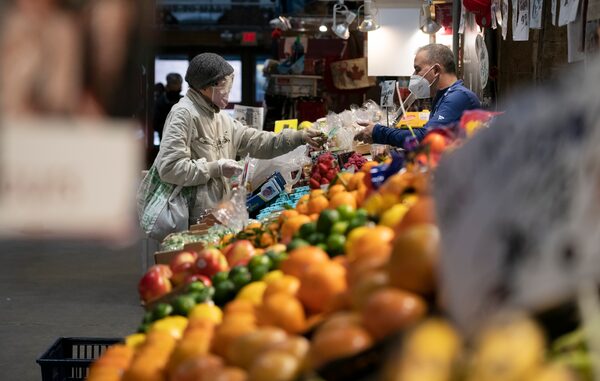
Anecdotally, some Canadians of late have noticed that certain produce isn’t as fresh as it used to be, and will rot much sooner, but there are no specific data on this yet.Fred Lum/The Globe and Mail
Sylvain Charlebois is a professor of food distribution and policy and the director of the Agri-Food Analytics Lab at Dalhousie University, and co-host of The Food Professor Podcast.
By now, you may have heard of a phenomenon called shrinkflation: Companies reduce quantities without changing the price by adjusting their packaging strategy. The practice, which has been going on for years, creates the illusion of buying the same amount of product when it has, in fact, shrunk over time.
You may be unfamiliar with a similar term: “shelflation.” This happens when supply chains aren’t working optimally, and food products reach store shelves either less fresh than usual or even a little too ripe, robbing consumers from some needed shelf life at home.
According to a recent poll by Dalhousie University and the app Caddle, in the past 12 months, 41 per cent of Canadians have thrown away milk because it went sour before its due date. Of that group, 38.5 per cent of respondents have done so at least twice, and 22.8 per cent have done so three to five times. Products spoiling before their due dates does happen from time to time, but such a high number is unusual.
For highly perishable foods, such as dairy, the shelf life – the time between production and the use-by date – is set rather conservatively to ensure food safety. Expiry dates or best-before dates are critical to the fabric of our food safety system, and modern technologies have done wonders to prolong the shelf life of many of our products. But nothing is foolproof.
The pandemic has disrupted global food supply chains in more ways than one, so we shouldn’t be surprised to see more “shelflation” happening. Asking food companies to operate with fewer staff around will eventually bring forth delays and, with them, more waste.
Dairy supply management is about to inflate our grocery bills – again
But pandemics aren’t the only way a product’s shelf life can be compromised. Delays caused by weather, natural disasters (such as what we witnessed in British Columbia last year), labour disputes, massive recalls or equipment failures can disrupt a supply chain’s efficiency.
Cold chains, which are responsible for keeping perishables fresh from farm to store – by maintaining a temperature between 2 and 8 degrees, along with a high relative humidity – can also be breached. Mechanical breakdowns, hindrances outside the warehouse or unusually warm temperatures, for example, can shorten the life of or even spoil products before a shipment reaches the consumer.
Food waste is a major challenge to our economy in Canada: About 2.2 million tonnes of edible food is wasted each year. The most common causes of perishable food waste at a retailer are overstocking, unpredictable consumer demand, inappropriate quality control and product handling. Compounded by issues up the food chain, retailers don’t stand much of a chance.
But waste at home also contributes to higher food costs. The average family of four will spend about $14,000 on food annually, and at least 50 per cent of that budget is dedicated to perishables. Wasting a good portion of that can be costly. Nearly 60 per cent of food produced in Canada is lost and wasted annually across the supply chain, according to Second Harvest, a food rescue organization in Toronto.
At the grocery store, we essentially buy time along with our food. We hone in on expiry dates because assessing the state of items with air-tight packaging is otherwise impossible. We pick fruits and vegetables that are appropriately ripe based on when we plan to consume them. But as consumers, we do not know a product’s history from before it reached the store.
Anecdotally, some Canadians of late have noticed that certain produce isn’t as fresh as it used to be, and will rot much sooner, but there are no specific data on this yet. The freshness and quality of perishables vary depending on where you live and where you shop. Some regions are better served than others.
The good news for everyone is that, unlike shrinkflation, “shelflation” can be dodged. We just need to approach our grocery shopping a little differently.
Given the current food supply chain woes, going to the grocery store once a week, or once every two weeks, may not be ideal right now. Instead, doing a food run two or three times a week – and buying enough for the next two to three days – may waste less and help you in the long run.
Your time is valuable. Have the Top Business Headlines newsletter conveniently delivered to your inbox in the morning or evening. Sign up today.